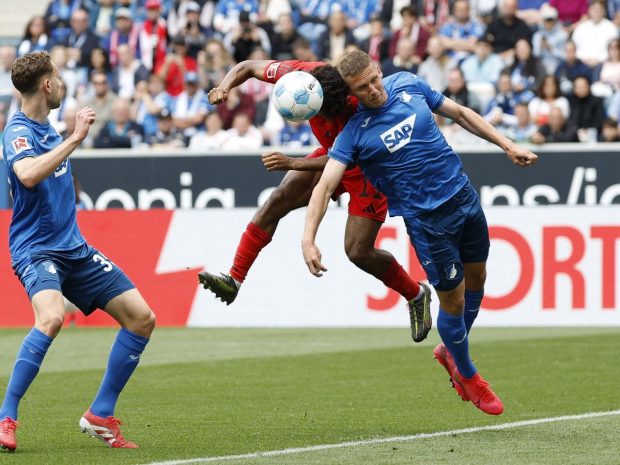NEW YORK — Kodai Senga’s hamstring strain is Grade 1, the least severe, meaning the right-hander will be shut down for about the next two weeks before being re-evaluated and ramped up to return. This places Senga’s timeline to be back in the Mets’ rotation in the second half of July.
“I feel like it’s relatively good news,” manager Carlos Mendoza said.
Advertisement
The important step now for Senga and the Mets is to ace this recovery process, in a way they didn’t with either of Senga’s rehabilitations last year. In both instances, it appeared he and the Mets were not on the same page at times. Questions about Senga’s next steps or his ultimate timeline were met with shrugs more often than with other players.
It’s important that the Mets and Senga learn from whatever disconnect existed then and apply those lessons to make this recovery process smoother all around.
“I wouldn’t say we weren’t on the same page. It was a tricky injury with a few setbacks,” Mendoza said. “Now that we’ve gone through it with Senga, I’m pretty confident (in) the communication and the feedback with him. We’ll continue to listen to him.”
Indeed, going through the experience last season should help this time around.

One team source described Kodai Senga on rehab “like a hot-air balloon in a hurricane.” (Jim McIsaac / Getty Images)
“A lot of players, but particularly Senga, want to be involved in the process,” president of baseball operations David Stearns said. “It’s important that we get on the same page from the jump and that we’re all bought into what this process is going to look like.
“I think we got there last year, but anytime you’re going through this multiple times, I certainly know Senga a lot better now than I did last year. Our medical staff has worked through a rehab progression and rehab process with him already on multiple occasions. We feel pretty comfortable that whatever this turns out to be, we’re going to be able to work very productively with him to get him back healthy.”
That means the Mets being more forthright with their expectations for Senga. Typically, New York looks at a rehab in smaller increments, leaving room for improvisation as the player’s health dictates. Taking that approach with Senga, who likes doing things his way, did not provide enough structure, with one team source describing the pitcher on rehab “like a hot-air balloon in a hurricane.”
Advertisement
The Mets are fortunate that almost no team in baseball is better equipped to handle the absence of their best starter. New York dealt with losing Senga a year ago, its rotation has been lights out all season, it already has an established major-league starter to step into Senga’s rotation spot in Paul Blackburn and it has reinforcements on the way in Frankie Montas (by the end of the month) and Sean Manaea (in July). It doesn’t hurt, either, that the team is in first place in the National League East.
Nevertheless, making the rehab process smooth for Senga is vitally important to the Mets’ end goals. No pitcher on their staff has a higher ceiling than the 32-year-old, who appeared on Cy Young ballots in his rookie season in 2023 and was on pace for his second All-Star nod this season — the kind of pitcher they wanted to throw Game 1 even when he wasn’t all the way back in 2024.
Looking back on last year’s postseason, perhaps the only hypothetical that haunts the Mets is what a fully healthy Senga could have meant for them, especially in their NLCS against the Dodgers. With the rest of the rotation flagging, Senga was rocked in his abbreviated start in Game 1 and pitched only in a mop-up role in the season-ending Game 6. A healthy Senga would have meant two better starts in the series, more aggressive usage of David Peterson out of the bullpen and a better chance of a pennant.
This season, the Mets have been clearer in communicating their expectations for Senga. They did it in spring training, lining him up to start the fifth game of the season to better prepare him for the regular season’s workload. And Senga has performed exceptionally well, leading Major League Baseball with a 1.47 ERA over 13 starts.
Furthermore, new assistant pitching coach Desi Druschel has been especially beneficial for Senga. The two have developed a strong relationship, with Druschel helping prevent Senga from throwing too much.
“He’s very meticulous with what he does with his rehab and his mechanics and his throwing program,” Mendoza said. “I feel like we’re in a good place, and I’m not anticipating any issues here.”
(Photo: Jim McIsaac / Getty Images)
This news was originally published on this post .






Be the first to leave a comment